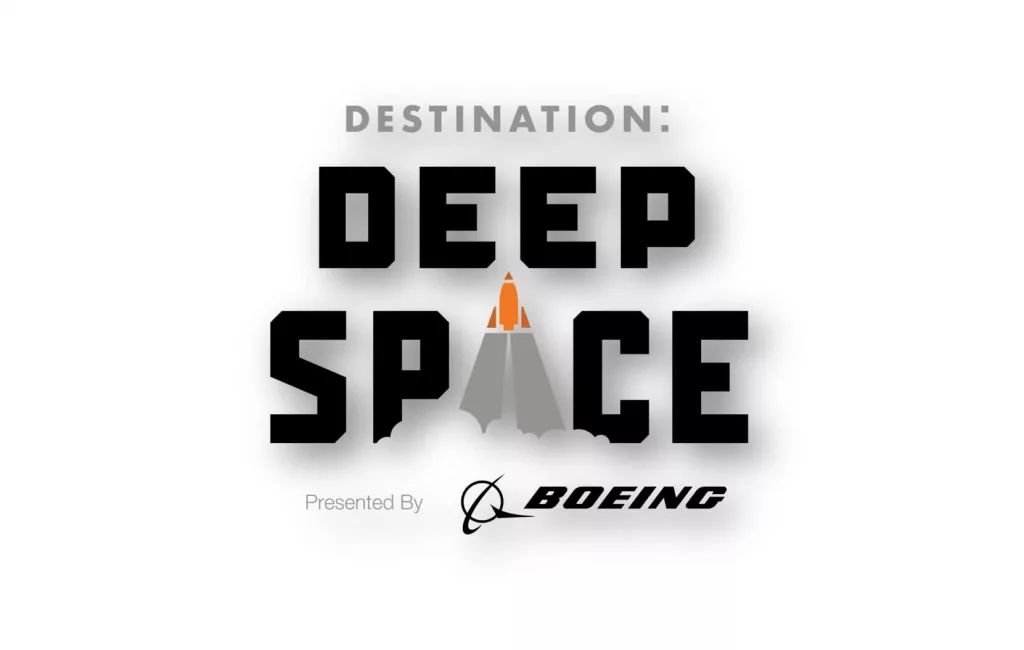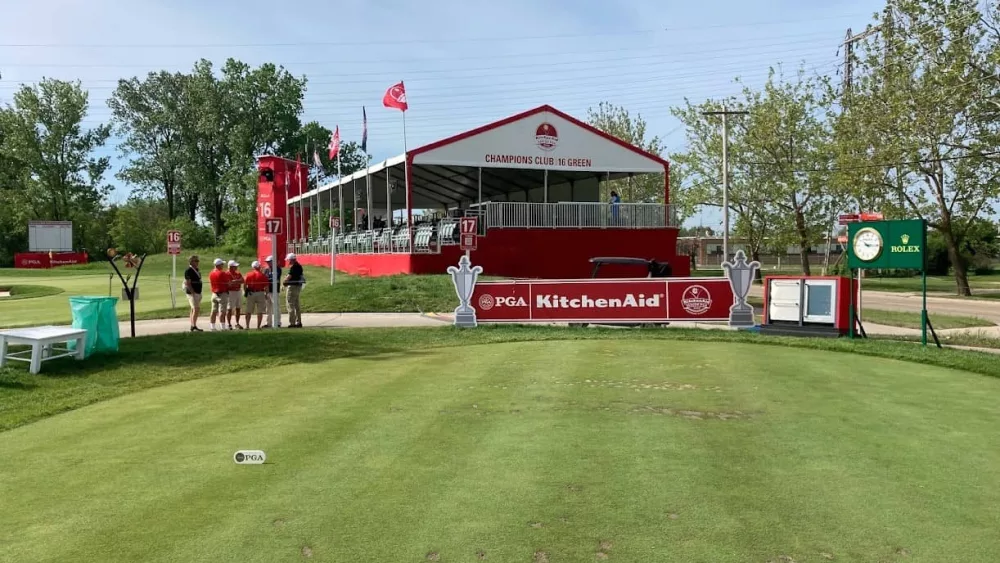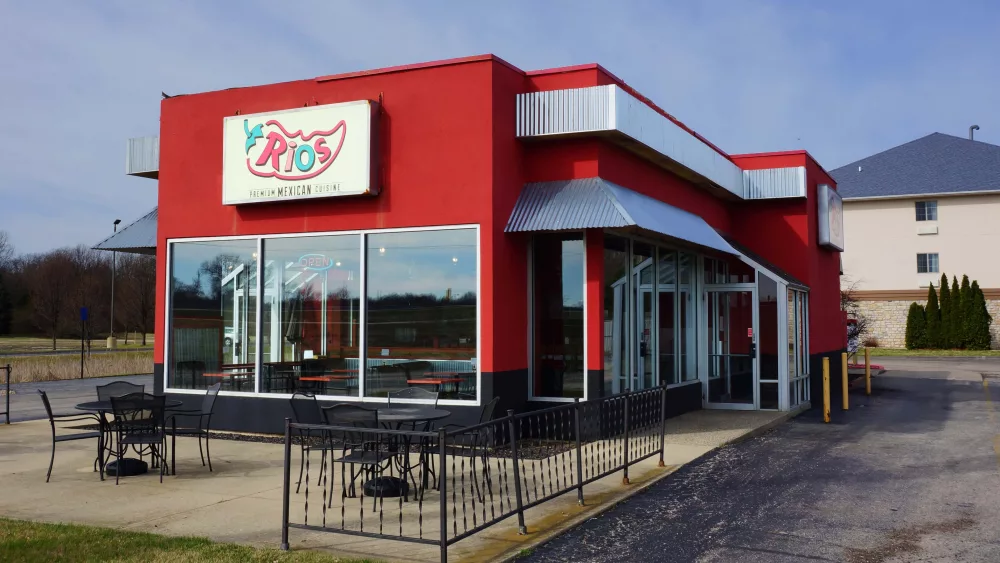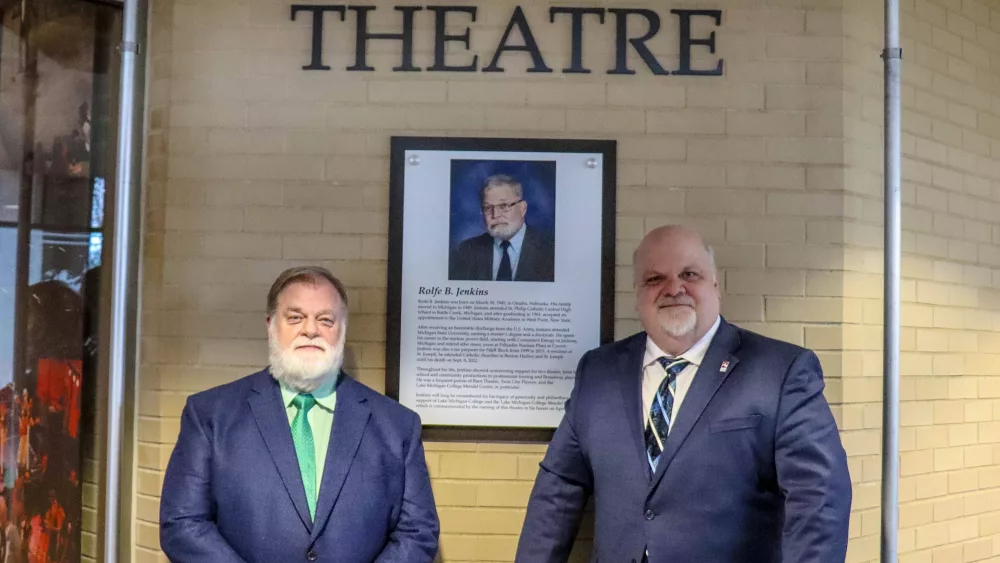With a realistic, multi-faceted countdown to launch this morning, FIRST Robotics students worldwide began a six week mission into Deep Space — more than 430 of them right here in Michigan’s Great Southwest.
That’s now many turned out for the revelation of this year’s game at the Lake Michigan College Mendel Center for Arts & Technology with a decided lean toward the technology, watching a live global telecast of the game’s reveal and playing field description.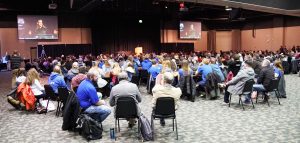
Scott Bradford acted as host and emcee in the absence of team leader Tim Dunaj, and was just as excited as the students thanks to this year’s twist. He says, “This is my eighth year doing this and this is the first year that I haven’t had a chance to get an early look. This is the first year where we haven’t done a mock field. Our local teams build a mock field so you can look at it, but don’t know what the game is, yet still get an idea of what’s going to happen, but not anymore. This is all virtual reality now.”
After delivering a recap of the Sunset Coast Robotics Alliance performance of 2018 activities and hearing from Congressman Fred Upton at the mic, Bradford pumped the kids up for the live launch on big screens at the front of the room. Due to the new plan this year he says, “Everyone learns worldwide at the same instant what the game will entail. Every kit of parts delivered today will have a Google Cardboard set of virtual reality glasses, so they will actually be able to see the field working, and that’s when they separate and teams head back to tables or to their schools and they start planning now for the next six weeks.”
Bradford echoed the anticipation of the dozens of students in the house, admitting, “It’s been exciting because you just don’t know what’s going to happen.”
FIRST Robotics has become a major academic sport across the region and the rest of the state and nation as well. Bradford says, “Michigan has more teams than not only any other state, but we have more teams than any other country in the world. The state tournament in Michigan is 160 teams. We send more teams from Michigan to the world competition than any other state as well. Obviously the level of competition here is huge, and we have teams that do very, very well in world competitions.”
The growth of interest in robotics and technology is being watched very closely by local high tech manufacturers who also serve as sponsors, underwriters, coaches and mentors for the FIRST Robotics students. With the huge skilled trades gap across Michigan, the business community has a vested interest in keeping students interest in technology and advanced manufacturing at the highest levels possible as they are the workforce of the future.
Regarding the skills the students get from participating in FIRST Robotics, Bradford stands in complete amazement, saying, “The things that these kids are learning now, I realize they know so much more than I do, and they’re in high school. Where they are going with robotics and IT, any technological advances that they’re learning now with what they’re doing…they’re going to be so far ahead of where I’m at. I can work my laptop but that’s about it.” The work they experience through the competitions is an outstanding launch pad for a strong potential future in high tech engineering jobs that pay well and provide extreme satisfaction.
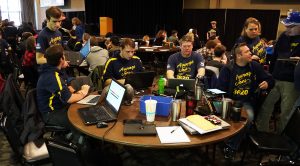
The annual launch telecast was seen across the globe, Bradford notes, “It’s truly world wide…the Twitch live chatter engaged during the hoopla of the pre-launch today was amazing with people checking in not only from all over the United States, but I saw entries from Shanghai, Sweden, Germany, and it’s amazing how big this is worldwide.”
Here’s a description of the game challenge as shared in the kit manuals:
In Destination: Deep Space, Presented By The Boeing Company, we join two competing alliances collecting samples on Planet Primus. Unpredictable terrain and weather patterns make remote robot operation essential to their mission on the planet. With only 2:30 until liftoff, the alliances must gather as many cargo pods as possible and prepare their spaceships before the next sandstorm arrives.
T-minus 2:30: A sandstorm limits driver visibility so robots independently follow pre-programmed instructions or are operated by human drivers via video from their stations. Alliances score points by:
- Deploying robots from Habitat (HAB)
- Preparing rockets and cargo ship with hatch panels
- Loading cargo pods into their rockets and cargo ship
T-minus 2:15: The sandstorm clears, and human operators take control of their robots.
Alliances continue to score points by:
- Preparing rockets and cargo ship with hatch panels
- Loading more cargo pods
- Returning the robot safely to the Alliance’s HAB
0:00: Rocket liftoff
The Alliance with the highest score at the end of the match wins.
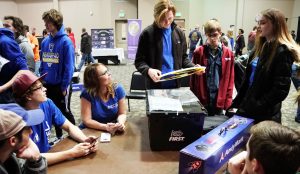
Click the link below for animation video that details the challenge completely:
https://www.youtube.com/watch?v=Mew6G_og-PI&t=0s&list=PLZT9pIgNOV6bbr6hfD2K0WZgvQT_B6JVX&index=2


